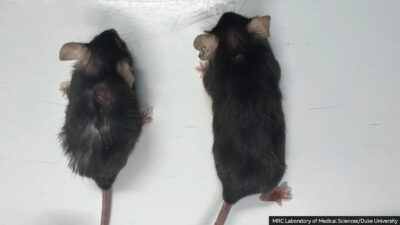The U.S. Department of Agriculture’s chief livestock safety and inspection officer says that bird flu has been found in backyard flocks in Kansas and Illinois.
The highly infectious and lethal strain of avian flu has been detected in both commercial and backyard poultry flocks in at least 12 states.
On Saturday, the USDA said that samples from the backyard mixed-poultry flock in Franklin County, Kansas, had been tested at the Kansas State Veterinary Diagnostic Laboratory, while samples from the Illinois flock had been tested at the University of Illinois Veterinary Diagnostic Laboratory.
The USDA said that state animal health officials are working closely with the agency to respond to the infections. The USDA said that the quarantined premises will have birds depopulated to prevent the spread of the disease and to ensure they will not enter the food system.
The virus has also been detected in wild birds in a number of states, prompting the closure of bird exhibits and aviaries in Florida.
Despite the detection of bird flu in the backyard and commercial flocks in almost a quarter of U.S. states, the Centers for Disease Control and Prevention (CDC) maintains that the virus does not present a threat to public health.
The CDC has said that there have been four detections of bird flu making the rare leap to humans in the United States since 2002. Avian flu in humans can potentially cause severe respiratory disease with a high mortality rate.
“Transmission [to humans] can occur where individuals who have prolonged close contact with infected birds can become infected themselves,” said Professor Peter Barlow, chair of immunology and infection at the School of Applied Sciences at Edinburgh Napier University.
The CDC said this usually happens when infected birds shed the virus in bodily fluids such as saliva, mucus, and feces. Human infection happens when these fluids get into a person’s eyes, nose, or mouth as droplets, or become mixed with dust and are inhaled.
Even though most human infections occur when a person comes in contact with infected birds or surfaces contaminated with the virus, the CDC says that rare infections have been identified where direct contact is not known to have occurred.
Barlow said that the most effective way of preventing avian influenza in humans is to avoid sources of exposure and that animal workers should also follow the guidance provided by the CDC on the use of personal protective equipment.
According to Professor Mark Jit of the London School of Hygiene & Tropical Medicine, this is a big worry for poultry farmers in the affected states because it could lead to many birds dying of flu, and others needing to be culled to stop the spread of the virus.
“If anyone does get infected with highly pathogenic avian flu it is unfortunately bad news for that person because it tends to cause very severe illness in humans too.”
“The virus doesn’t easily transmit between humans, so it’s unlikely to cause a large outbreak,” said Jit. “However, there have been a few documented cases of transmission between close contacts like household members.”
















